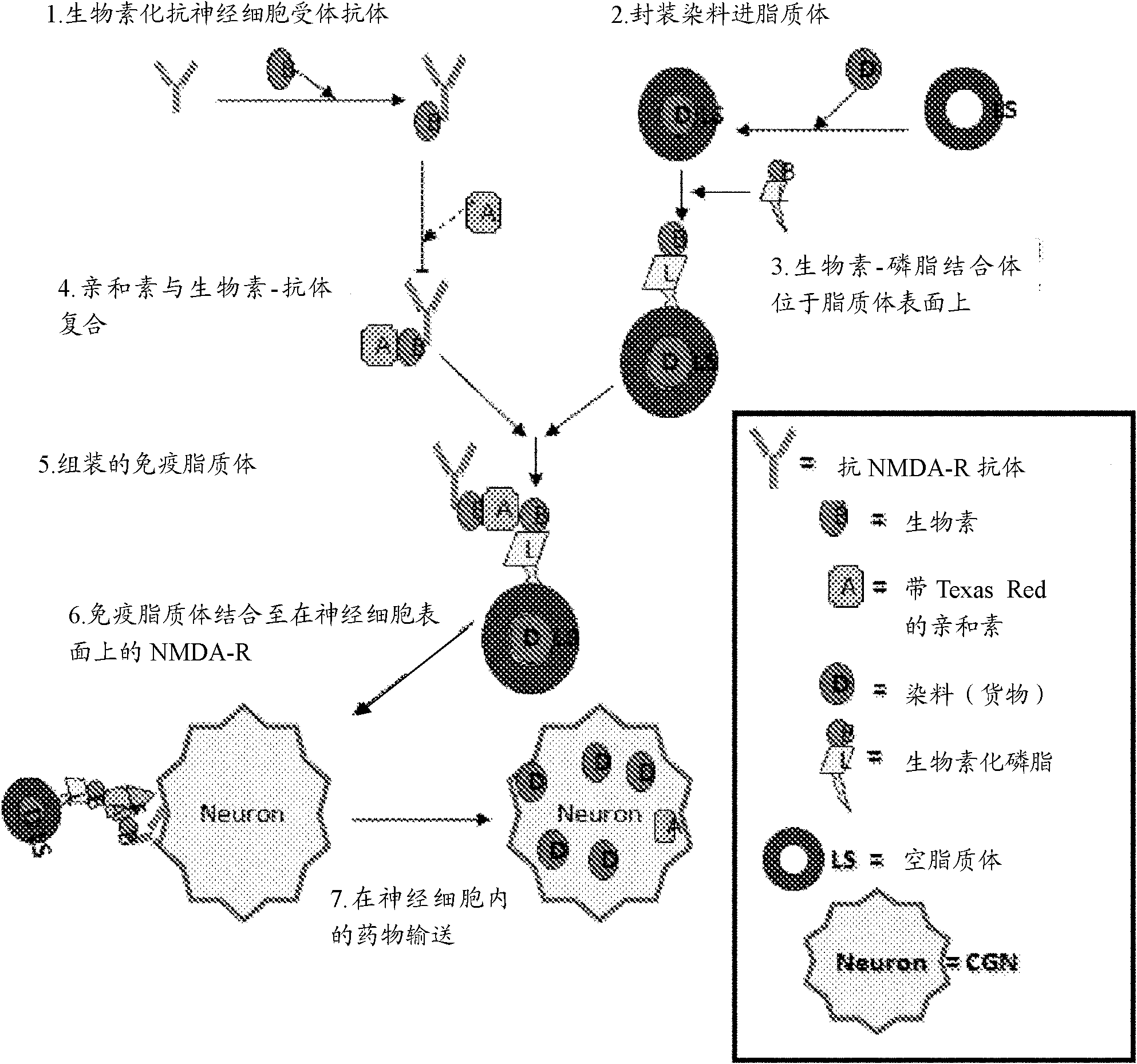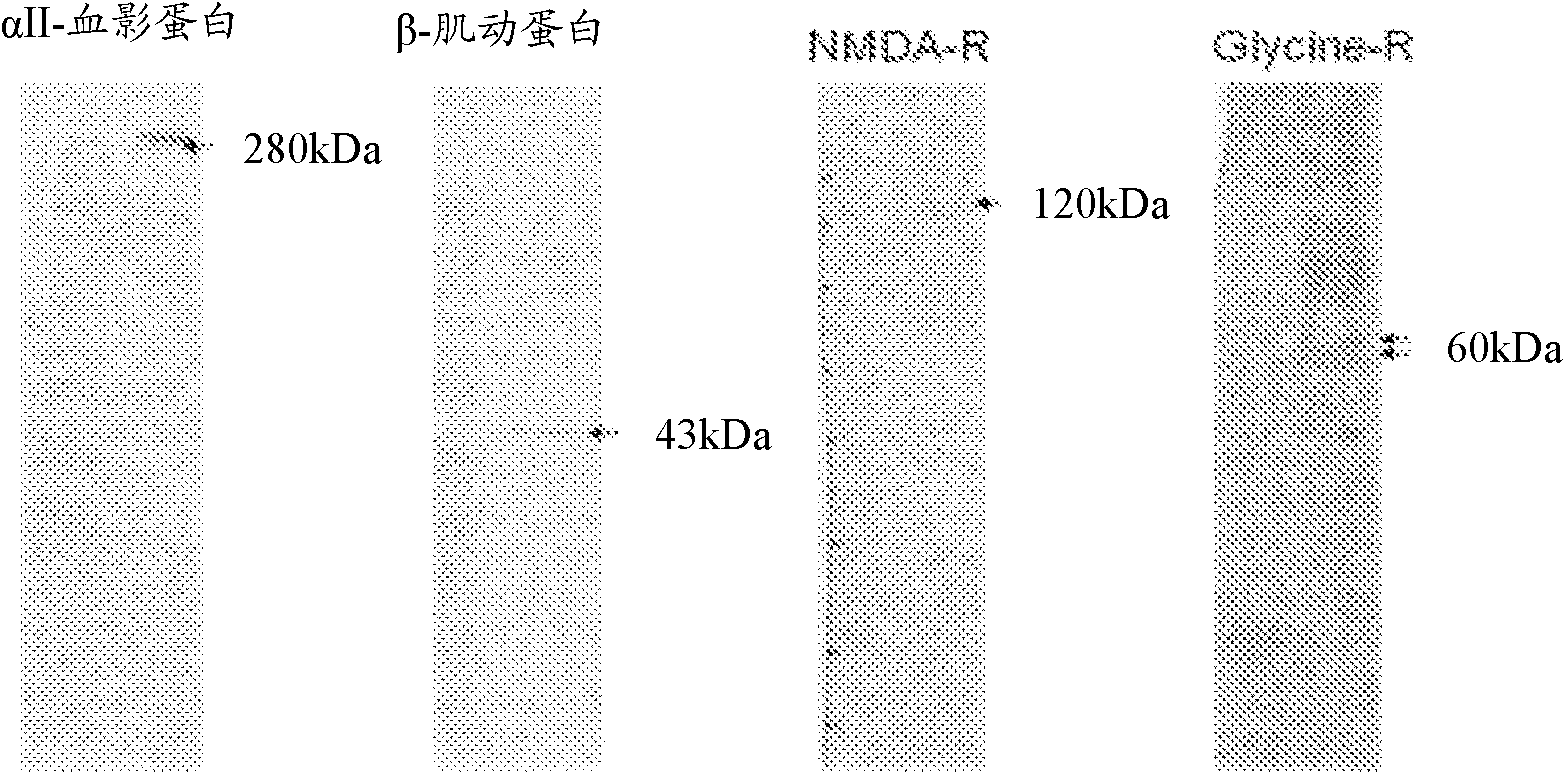An antibody bound synthetic vesicle containing active agent molecules
An active agent, vesicle technology, applied in the field of antibody-bound synthetic vesicles
- Summary
- Abstract
- Description
- Claims
- Application Information
AI Technical Summary
Problems solved by technology
Method used
Image
Examples
example 1
[0064] Example 1: Reagents and Antibody Target Identification: Exemplary materials and reagents used are optionally as follows. It will be appreciated that those of ordinary skill in the art will recognize other reagents that are equally operable to make and use the present invention. Places for obtaining these reagents are also known to those skilled in the art and include, for example, Invitrogen Corp. (Carlsbad, CA), EMD Chemical, Inc., VWR Scientific (West Chester, PA), Santa Cruz Biotechnology (Santa Cruz, CA) and other biological reagent suppliers. Materials and reagents illustratively include: PBS solution, 3.7% formalin solution, Tris-glycine electrophoresis buffer (Invitrogen), gel transfer buffer (Invitrogen), precast gel electrophoresis (Invitrogen), western blot filter paper and Polyvinylidene fluoride (PVDF) membrane (Invitrogen), methanol, Tris-buffered saline (TBST) solution containing Tween 20, (Sigma), rat primary cerebellar granule neurons, skim milk powder,...
example 2
[0067] Example 2: Recognition of NMDA / glycine receptors on the surface of CGN cells by immunocytochemical antibodies
[0068] Antibodies targeting surface expressed NMDA receptors or glycine receptors were confirmed by immunocytochemistry using CGN cells. CGN were grown on coverslips for 7 days. It was then washed with phosphate buffered saline (PBS), fixed with 4% paraformaldehyde solution at 4°C for 10 minutes, and then blocked with 5% normal goat serum in TBST for 30 minutes at room temperature to prevent any non-specific binding of antibodies.
[0069] Divide the cells into two experimental groups. One set was washed with cold methanol for about a minute to open the cell membranes and make the cells permeable to the antibody. In another group, the cell membrane was left intact so that the antibodies could not cross the membrane. Both groups were incubated overnight with primary anti-NMDA and glycine receptor antibody (1 / 500), then washed, and incubated with FITC-seconda...
example 3
[0071] Example 3: Conjugation of Biotin to Antibody
[0072] Antibodies of the invention are biotinylated by methods known in the art. Briefly, antibodies were transferred to 1X modification buffer (100 mM phosphoric acid, 150 mM sodium chloride, pH 7.2-7.4). A biotin solution was prepared at a concentration of 0.5 mg of biotin per 25 µL of DMF (dimethylformamide). Add 0.8 µL of biotin solution to the antibody solution and incubate for two hours at room temperature on a rotary agitator. After incubation, the solution was transferred to a spin-on filter and centrifuged 4 times at 12000 xg for 30 minutes to filter out unbound biotin molecules. The remaining solution that was not filtered was stored at 4°C until future use.
PUM
| Property | Measurement | Unit |
|---|---|---|
| diameter | aaaaa | aaaaa |
Abstract
Description
Claims
Application Information
 Login to View More
Login to View More - R&D
- Intellectual Property
- Life Sciences
- Materials
- Tech Scout
- Unparalleled Data Quality
- Higher Quality Content
- 60% Fewer Hallucinations
Browse by: Latest US Patents, China's latest patents, Technical Efficacy Thesaurus, Application Domain, Technology Topic, Popular Technical Reports.
© 2025 PatSnap. All rights reserved.Legal|Privacy policy|Modern Slavery Act Transparency Statement|Sitemap|About US| Contact US: help@patsnap.com



